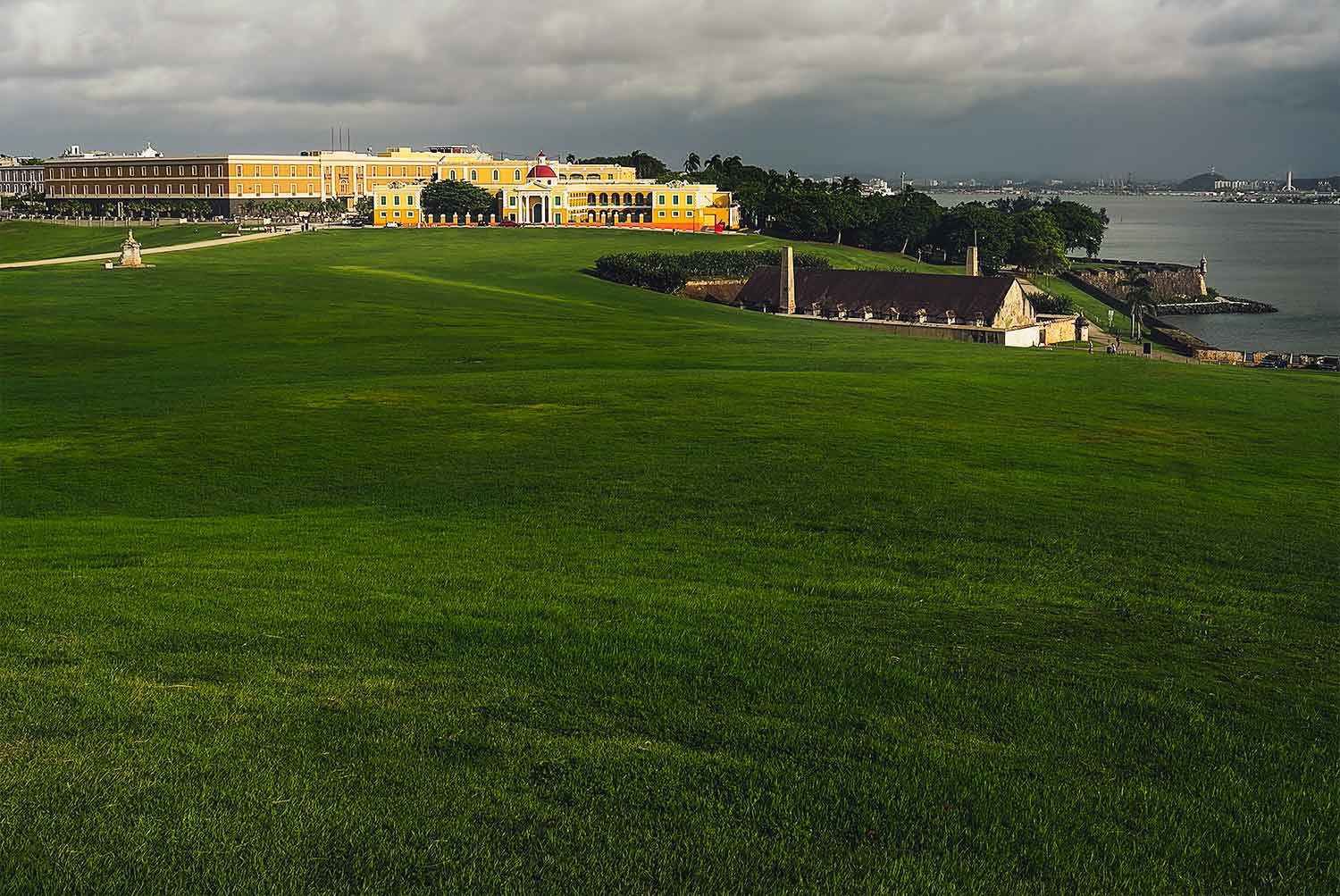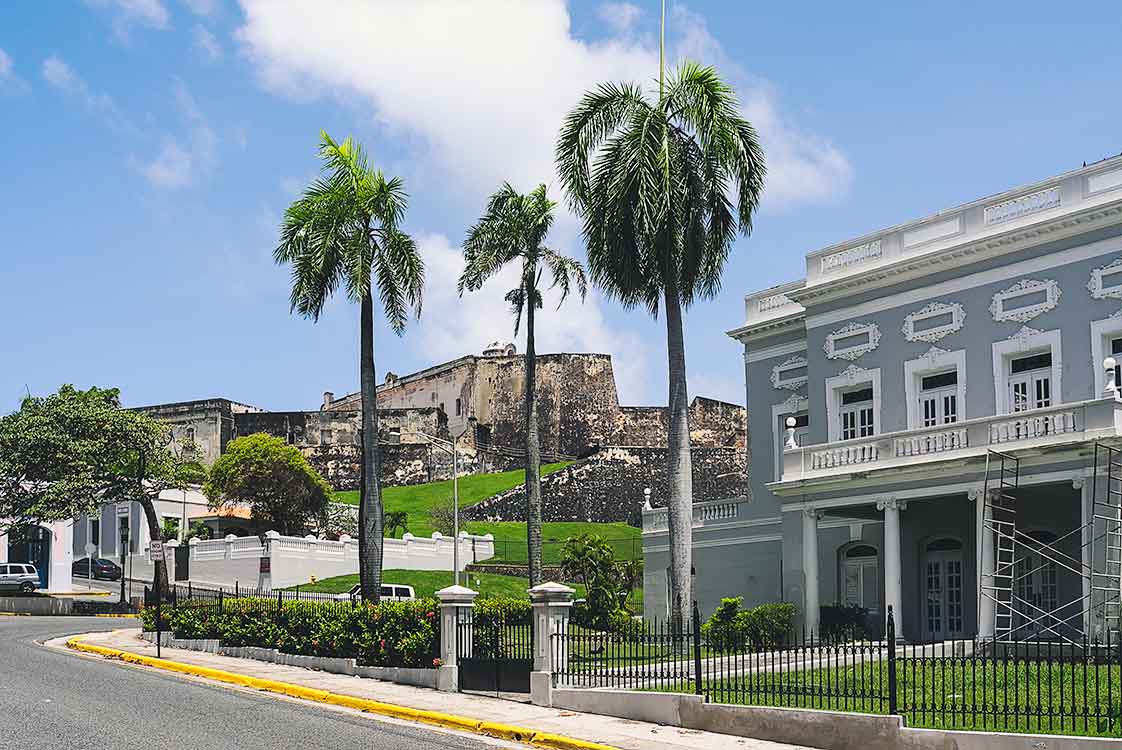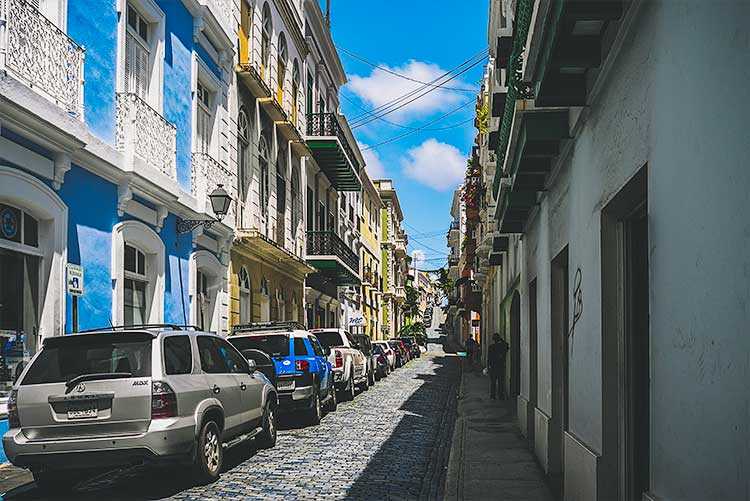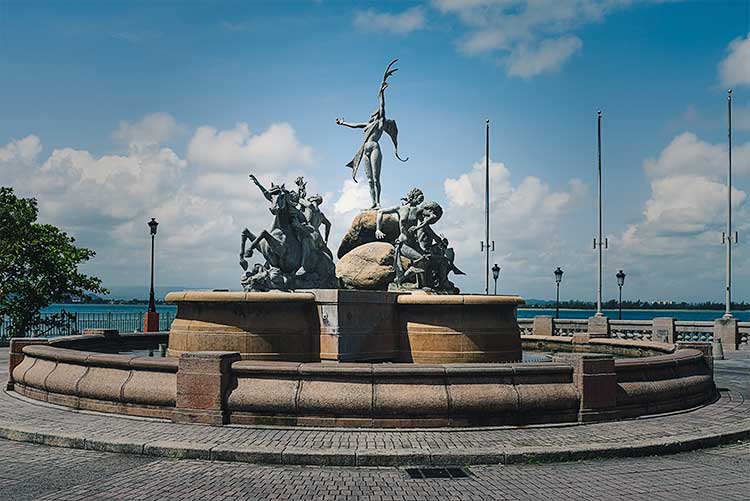A Weekend In Old San Juan
An acceptance by each of their lot, and an easy adjustment to life, all go to make Puerto Ricans, some surveys say, among happiest people on the planet.

A lapdog belonging to a party lolling on the grass rushed toward another party walking a Great Dane. The lapdog party shot up from the grass to fetch the little fellow, and the walkers struggled to restrain the Great Dane. Another party readied a red monster-kite for the promising wind. Hurricane Maria wasn't coming, whereas she had threatened to arrive last night. She merely swished her hems upon Puerto Rico and upon the island's neighbours — Cuba, and the Dominican Republic. Some rain did come down, and it was heavy when it fell, but the whole thing lasted a few minutes a time, and the sun beamed down after each rain like he'd never been gone.
This expanse has been kept up like this for centuries—deep and wide and open—by design. In our time this vast expanse is for rest and play, but in the past its purpose was defence. Should the enemy, arriving by sea, survive volleys from the cannons on this island (and from the little island you can see across) and scale the cliff from which the fort wall rises, its next task would be to cross this deep field and reach the defenders ensconced behind the battlements back of it — giving the defenders time enough to pick and kill.
All of Old San Juan is as well preserved as the Fort. The cobblestones on the long narrow streets are worn smooth by the elements over centuries, and by millions of footfalls. The museums had closed out of respect to hurricane Maria, but I wasn't disappointed, being happy to just sit in the squares in the middle and at the end of Calle San Francisco, and watch the pigeons among the puddles in the cobblestones. The colours on their necks turned off and on and glinted in the sun. The islanders like to visit Old San Juan on the weekend for the sights and the restaurants and boutiques that sell modern brands in quiet old buildings. The shoppers often paused and fed the pigeons with what they had, and allowed them to sit on their arms and beat their wings. Little girls stamped their legs and squealed for papa to catch a bird for them to hold.


Later, I walked the three lovely miles of promenade between the fort walls and the ocean. And I came upon an iguana on a clump of black rocks. It was green and long and pointy, and pretty, unlike its cousins that I know at home, not one bit shy, and it allowed me to take many pictures on both sides.
Puerto Rico has its problems: teen marriages abound that do not last three years; drugs transit the island en route to the US, leaving behind a trace of addiction and drug-related violence; a feeling of lost identity prevails, and a sense of being wronged by too many for too long—which soggy emotion weighs down Puerto Rican writing—and alcohol consumption is high and rampant. But the people are quick to kick off worry and sing and dance—the Latino in us, they say. That, and acceptance by each of their lot, and an easy adjustment to life: they all go to make Puerto Ricans, some surveys say, among happiest people on the planet.
And happy people make good employees, I suppose. I spent the work-week in an American plant on the south of the island, in Ponce. It's a superb plant owned by a Fortune 100 multinational, with best-practices in evidence everywhere. The Latinos suffer from machista, a local told me, listing the macho's weaknesses, but the men and women that I saw on the shop-floor, in their thirties and forties, had mastered the skills for their processes and worked away nimbly, with no less focus that at any disciplined Asian plant. How did they stay concentrated with the beach two minutes away? Ah, but the beach is close everywhere on a small island. A job opportunity like this one is hard to come by.

